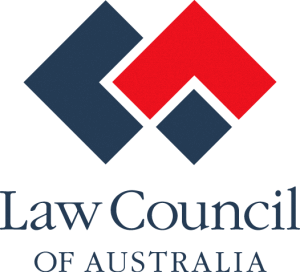- TAX LAWYERS, TAX ADVISORY, TAX COMPLIANCE, EXPATS - SYDNEY, BRISBANE, MELBOURNE, CANBERRA
- 1300 334 518
- admin@waterhouselawyers.com.au
All about the general interest charge
Tax Debt
All about the general interest charge
If you have a tax debt, then you already know that the ATO charges you interest on it. This is the ‘general interest charge’ (also known as the GIC).
The rate of the general interest charge is calculated each quarter. It is roughly equal to around twice a standard mortgage rate. The exact rules for how to calculate the rate are set out in the tax legislation. You can read more about how it works here.
The general interest charge will appear on your statements and transaction lists. It accrues daily, but it is usually added to your statement in blocks of time, anywhere from a few days to a month.
The GIC applies to many things
The general interest charge applies to many different kinds of debts owing to the ATO, such as:
- income tax owing under a lodged Income Tax Return
- pay as you go income tax instalments
- GST
- pay as you go withholding tax
- administrative penalties – such as failure to lodge penalties or default penalties
- any general interest charge already accrued (due to the daily compounding of the GIC)
But it doesn’t apply to everything owed to the ATO. A key example of this is an amount personally owed by a director under a Director Penalty Notice. The general interest charge still accrues on the underlying amounts that the company owes. But there is nothing in the law that allows the ATO to impose general interest charge on a director penalty.
Why the GIC exists
There are two main reasons the ATO charges the general interest charge on unpaid tax liabilities:
- to act as an incentive for you to pay your tax on time
- to make sure that those who don’t pay on time do not receive an advantage over those who meet their obligations
In keeping with these reasons, the rate of the general interest charge is relatively high. It is almost twice the rate of a standard mortgage (but less than half of a standard credit card rate).
The GIC is tax-deductible
You can claim a tax deduction for the general interest charge when it is incurred. It is deductible under the ‘Cost of managing tax affairs – Interest charged by the ATO’ section of your income tax return.
The word ‘incurred’ is very important here. It means that the deduction is available even if you haven’t paid the general interest charge. It also means that the deduction may become available a long time after the general interest charge started accruing.
[note color=”#F2F8F7″]Accrue vs Incur Accrue:GIC for late payment accrues from the time the underlying debt was due Incur:The GIC is incurred when you become liable for it, which is usually when you are given the assessment that charges you the underlying debt[/note]
Let’s say you lodge your 2017 income tax return on 23 January 2020 and receive your Notice of Assessment in February 2020. You have incurred the general interest charge in the 2020 tax year. That general interest charge will have accrued daily from when the 2017 tax return was due (i.e. in November 2017 for a self-lodger).
The ATO provides this information as a pre-filled deduction in both myTax and the systems used by accountants. Despite this, the responsibility always rests with the taxpayer to make sure the pre-filled information is correct. As such, it’s a good idea to have some understanding of how it all works. The ATO has detailed information on its website explaining how exactly to manually calculate the deductible amount.
The GIC and payment plans
For most taxpayers, the general interest charge continues to accrue when you are in a payment plan. So, the longer the plan, the more interest you will pay.
This means that when you negotiate a payment plan with the ATO, you need to factor in the general interest charge.
As such, if your tax debt is $48,000 and you want to pay it over 2 years, your payment won’t just be $2,000 a month. It will need to be more, to account for the general interest charge.
Because the rate of the general interest charge is set quarterly, it is not possible to know how the rate will change over the life of a 2 or 3-year payment plan.
In my experience, the ATO usually calculates payments under a plan using an amount close to the general interest rate at the time the plan is negotiated.
This means that if the general interest rate is 8%, then monthly payments for a 2-year plan on a $48,000 debt is likely to be around $2,170 per month.
The GIC on re-raised tax debts
The ATO can decide not to pursue a tax debt if it would be uneconomical to do so. This can happen when it seems that a person is no longer trading or earning an income, and has no assets to pay the tax debt.
However, the ATO can then re-raise that tax debt at a later date. Usually, this happens when the person lodges a tax return that shows they now have money coming in.
When a tax debt is re-raised, the ATO will charge the general interest charge from the time they stopped pursuing the debt to the time it was re-raised, and then continue charging interest until it is all paid.
The ATO can sometimes remit the general interest charge that accrued in the period the debt was not being pursued.
Reducing the GIC
The ATO has the discretion to reduce (or ‘remit’) the general interest charge.
There are four headings under which the ATO can remit the GIC:
- the delay in paying a tax debt was not caused by you, and you have taken reasonable steps to mitigate the circumstances leading to the delay
- you caused the delay in paying the tax debt, but it would still be fair and reasonable to remit the general interest charge
- there are special circumstances that would justify the remission of the general interest charge
- it is ‘otherwise appropriate’ to remit the general interest charge
In my experience, categories one and two are the most common ways that interest is remitted. You can read more about each of these 4 remission categories in this article about how to ask the ATO for a remission.
There are a few other things you should know when it comes to asking for a remission.
Myth: You must pay all of your primary tax (GST, income tax, etc) before the ATO can remit the GIC
The ATO will usually tell you that you need to pay the ‘real’ tax debt before they can look at a remission request. This isn’t strictly true. You can ask for a remission any time. However, one of the factors that may be considered in assessing your request is whether you have paid the ‘real’ tax debt yet.
Everyone’s situation is different. In some cases, the only way you can realistically tackle the tax debt is by asking for a remission of interest, even when there is still some ‘real tax’ to pay. If the remission is granted, then you are left with a lower tax debt that you can pay in instalments over 2-3 years, under a negotiated payment plan.
Example Murray has a primary tax debt (income tax and GST) of $80,000, and general interest charges of $70,000. All up, he owes $150,000. Murray can pay the ATO $2,500 a month towards his tax debt. The ATO is chasing Murray and wants him to negotiate a payment plan. We know that the longest payment plan the ATO will usually allow is three years. There’s no way Murray can pay the $150,000 in three years. Murray’s specific circumstances should justify a remission of the general interest charge. So, a remission request is made now, asking for the $70,000 to be remitted, and a payment plan of $2,500 for 3 years is proposed.
Myth: If the ATO refuses to remit my general interest charge, I can lodge an objection
Unfortunately, you cannot object to the ATO’s decision not to remit the general interest charge.
The objection process is contained within the tax administration law. It allows you to have certain ATO decisions reconsidered internally. If you don’t agree with the objection outcome, then the same part of the law also sets out steps for appealing this – i.e. via the Administrative Appeal Tribunal or the Federal Court.
But not all decisions of the ATO can be objected to – and a decision not to remit is one of those that is not covered by the objection process.
This means you can’t object to a decision not to remit the general interest charge, nor can you appeal such a decision directly in the Administrative Appeal Tribunal.
Instead, if you don’t agree with the outcome of a remission request, the only formal avenue you have available to you is to seek review of the decision in the Federal Court. This is an expensive process, and I have never seen it work out in the taxpayer’s favour.
Myth: Asking for a remission of the GIC is easy if you use a template
There’s a template letter online for asking the ATO to remit the general interest charge. I’ve had a few people tell me they plan on using it, and my advice is always that they should be very careful.
The thing about asking the ATO for a remission of the general interest charge is that everyone’s reason for the request is different. It’s not as simple as filling in a few details in a template and sending it off. Instead, it requires a lot of thought and reflection so that you are putting your best case forward.
Given that there is no automatic right of review for a refusal of a remission request, I recommend seeking expert help with your request.
But, if you intend to request the remission yourself, you can read here for my tips on how to write the letter.
Myth: You don’t pay tax on the remitted GIC
If you are successful in having your general interest charge remitted by the ATO, then your tax debt will decrease.
However, when you lodge your next tax return, you will have to report some or all of the remitted amount as taxable income. This can come as a nasty surprise if you’re not prepared for it.
The GIC and disputed tax debts
A disputed tax debt is one that is due to the ATO but is being disputed via an objection or court or tribunal process.
The general interest charge will still accrue on the tax debt whilst the dispute is running.
However, the ATO can remit 50% of the general interest charge if you enter into a 50/50 arrangement.
A 50/50 arrangement requires that you pay all of the undisputed tax and 50% of the disputed tax amounts. If you do this, then the ATO will agree not to take debt recovery action against you and will remit 50% of the general interest charge that accrues from the time of your payment until the dispute is settled.
The GIC is different from the shortfall interest charge
If your tax return is amended (either by you or as a result of an audit), then your tax debt can increase. For example, if the ATO audits you and disallows deductions, then the amount of tax you owe will increase.
The ATO charges interest on any shortfall between the tax that you owed under your original tax return and the tax you now owe under the amended return.
The interest that applies is the shortfall interest charge (SIC). It is 4% lower than the general interest charge. It runs from when the original debt was due to 21 days after the amended assessment was issued. After that, the general interest charge will apply until the total debt is paid off.
Example Jessie lodges a tax return for the 2018 income year, showing tax owing of $14,000. Jessie pays this on time. The ATO audits Jessie and disallows a lot of deductions. An amended assessment is issued on 29 January 2020, showing a total tax of $34,000. There is a tax shortfall of $20,000. The shortfall interest charge applies to this $20,000 from the date the tax under the original assessment was due, until 18 February 2020. Jessie needs a few months to pay the tax shortfall and the shortfall interest charge. The ATO will impose the general interest charge from 19 February 2020 until everything is paid in full.
You can ask for the ATO to remit the shortfall interest charge. For example, remission may be granted:
- if the tax shortfall is paid before the ATO issues the amended assessment
- if the ATO contributed to the delay in issuing the amended assessment, by completing the audit after the expected completion date.
Credentials
Recognition




